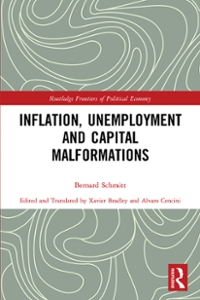Question
Supposeanalysts at a company that produces small appliances are looking at sales of 24 food preparation products in a medium-sized city in the Midwest U.S.
Supposeanalysts at a company that produces small appliances are looking at sales of 24 food preparation products in a medium-sized city in the Midwest U.S. They have noticed that sales have not met forecasted values for several months and want to look at the issue in more detail. You'll begin by specifying a model given the data in the file called Food Prep. After answering a series of questions, you'll highlight the key findings of the regression analysis.
Step 1: Specify the Model
Specify (write it out) a regression equation for sales with all of the independent variables included. Use proper subscripts and Greek letters where appropriate.
Step 2: Hypothesize the Signs of the Coefficients
For all four independent variables, hypothesize the sign of each regression coefficient. Explain your reasoning.
Step 3: Summary Statistics
Check the means, maximums, and minimums for each of the variables. Do you see any issues with the data?
Step 4: Estimation
Run the regression using all four independent variables and provide a copy of your regression results.
Step 5: Hypothesis Testing (t-statistics)
Test the slope coefficients of the independent variablesat the 5-percent level of significance. Show your null and alternative hypotheses and list the critical t-statistic used for each hypothesis test. For which coefficients can you reject the null hypothesis?
Step 6: Hypothesis Testing (p-values)
Test the slope coefficients of the independent variablesat the 5-percent level of significance using the probability values. For which coefficients can you reject the null hypothesis?
Step 7: Interpret coefficients
Interpret the coefficient for each independent variable.
Step 8: Model Evaluation
Evaluate the performance of the total model using the R-squared and Adjusted R-Squared values.
Step 9: Overall F-test
Use the overall Fstatistic to test whether the regression is significant at the 5-percent level. Show your null and alternative hypotheses and your decision rule using the F-table.
Step 10: Drawing Conclusions
Highlight key conclusions of the regression. What have you learned from your regression model? What conclusions would you share with the company analysts?
DATA IN THE TABLE BELOW:
| Sales ($) | Advertising ($) | # Competitors | Discounts | Warranty (years) | |||||||||||
| 4565 | 459 | 1 | 1 | 2 | Sales = monthly sales ($) | ||||||||||
| 4896 | 545 | 0 | 0 | 0.25 | Advertising = advertising expenditures ($) | ||||||||||
| 4480 | 472 | 2 | 2 | 1 | Number of competitors = number of competing products available | ||||||||||
| 4300 | 482 | 3 | 3 | 2 | Discounts = number of available discount opportunities (sales, coupons, etc) offered during the month | ||||||||||
| 3502 | 435 | 3 | 3 | 0.25 | Warranty = warranty period of the appliance in years | ||||||||||
| 4413 | 499 | 3 | 3 | 1 | |||||||||||
| 5868 | 604 | 0 | 0 | 1 | |||||||||||
| 4527 | 501 | 1 | 1 | 1 | |||||||||||
| 3849 | 370 | 3 | 3 | 1 | |||||||||||
| 5645 | 605 | 0 | 0 | 2 | |||||||||||
| 4665 | 557 | 1 | 0 | 2 | |||||||||||
| 5122 | 491 | 0 | 0 | 1 | |||||||||||
| 5248 | 443 | 0 | 0 | 1 | |||||||||||
| 5619 | 513 | 0 | 0 | 1 | |||||||||||
| 5419 | 424 | 1 | 1 | 2 | |||||||||||
| 5043 | 577 | 0 | 0 | 0.25 | |||||||||||
| 5207 | 538 | 1 | 0 | 2 | |||||||||||
| 4564 | 460 | 1 | 1 | 1 | |||||||||||
| 3799 | 464 | 2 | 2 | 1 | |||||||||||
| 4802 | 456 | 1 | 1 | 2 | |||||||||||
| 4959 | 525 | 1 | 0 | 1 | |||||||||||
| 4830 | 510 | 1 | 1 | 1 | |||||||||||
| 3694 | 479 | 3 | 2 | 0.25 | |||||||||||
| 5036 | 521 | 1 | 0 | 2 |
Step by Step Solution
There are 3 Steps involved in it
Step: 1

Get Instant Access to Expert-Tailored Solutions
See step-by-step solutions with expert insights and AI powered tools for academic success
Step: 2

Step: 3

Ace Your Homework with AI
Get the answers you need in no time with our AI-driven, step-by-step assistance
Get Started


